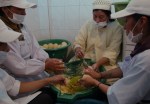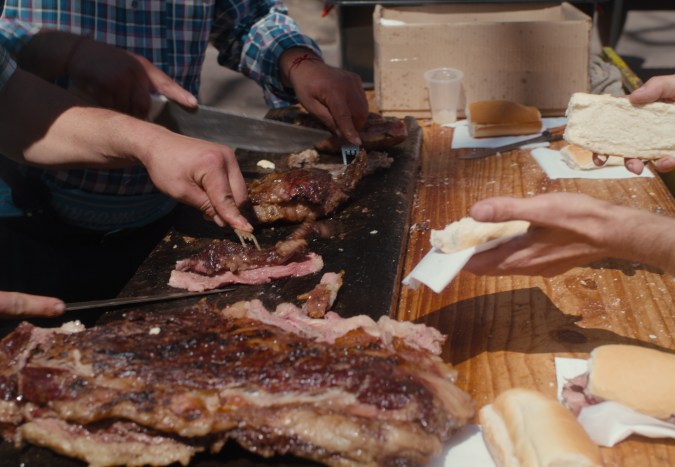Netflix’s critically acclaimed series Street Food went to Latin America for its second season. Argentina—a country known as the Europe of Latin America—kicks off the series. The episode focuses on Buenos Aires, the capital of the nation. Naturally, it concentrates on food influenced by its largest immigrant population, which hails from Spain and Italy but, as you know, there are many other cultures—such as German, Arabic, African and Ameridian—that make up Argentina.
Argentina is a country that, unlike its South American neighbors, proudly boasts its ties to Europe. The series introduces us to a young chef and various street vendors that make the market culture in Buenos Aires. One can’t help but cheer for Chef Pato Rodriguez, who had to fight homophobia and sexism to carve out space at the market. We can appreciate the crackling sound of an empanada being fried; and who doesn’t love a sausage sandwich (better known as choripán)? These are all great moments. However, we only learn about one part of Buenos Aires.

Although the episodes are only thirty minutes, many racial and ethnic groups could have been included in this culinary conversation—specifically, African and Amerindian influences. Amerindians are the original people of Argentina—they consist of 35 Indigenous groups. Most Indigenous people live in the Jujuy Province, but many reside in Buenos Aires as well. Their erasure from this episode goes along with the national narrative that Indigenous people have died, are on the verge of dying, or have assimilated. Humita and tamal salteños are a couple of the Indigenous dishes that could have been included.
Humitas are prepared with corn, sautéed onions, pumpkin and seasoned according to the region. Tamal salteño, on the other hand, originates from the town of Salta. To prepare them, corn husks are filled with corn flour and shredded meat (lamb or pork). Onions, pimentón and aji peppers are also added. Both dishes are consumed by many in the capital.

Smaller in population as compared to other Latin American nations as of 2013, Argentina has designated November 8th as Afro-Argentines and African Culture day; however, looking at the episode, one would think that African people don’t reside in Argentina. This is part of a more significant issue where people, for the longest time, thought that Black people died in the war or via the plague. Next are the Brown folks who are mostly a mixture of Europeans and Indians. They mainly reside in the northern part of Argentina but can also be found in Buenos Aires.
There seems to be a running theme in Argentina that supports the omission of Black and Brown people or believes they aren’t worth mentioning. This elevation of European culture over other cultures points to a bigger problem facing South America. In boasting its strong ties to Europe, Argentina believes they are more sophisticated and developed. Other countries in South America, while culturally influential, are labeled third world countries, aka poor. Meanwhile, Europe acts as a symbol of advancement and strength.

According to Netflix, via their press release, the idea of the program is “highlight the stories of perseverance and culture that bring life to each country’s cuisine.”

In order to achieve that objective, one must include all its inhabitants regardless of perception. Otherwise, it’s revisionist history, especially as it pertains to learning.
Amerindians are present all over Argentina, and it would have added validity to the program to see them featured. It also would have been great to see Argentinians of African descent’s influence on the cuisine. We know that corn was introduced by the Indians to the Spaniards, however, what did Africans bring to the melting pot of Argentine food?
Africans may only make up 0.37% of the country according to the census report of 2010 but, 2.2% of them reside in Buenos Aires, where principal filming of the episode took place.
One has to ask who made these very specific decisions of erasure seeing that the producers of the series are capable of telling a complete story of the region. They did it in the later episodes featuring Bahia, Lima, and Bogotá. Street Food: Latin America is a great series; however, it’s too bad viewers weren’t trusted with a complete picture of the culturally diverse city of Buenos Aires.




